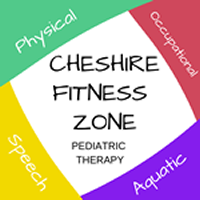Whenever you attend sporting events, you might have noticed the colorful tapes that many athletes wear across their backs, legs and shoulders. These things are called kinesio tapes and they are used by Olympians, NFL players, and many other sports athletes to cope with muscle weakness and pain.
However, do you know that the kinesio tape is not designed just for professional athletes? These tapes can be used by anyone who seeks to relax their muscles, reduce inflammation or manage pain. That’s why kinesio tapes are favored by many patients undergoing physical therapy. Let’s find out how these tapes work and how they can benefit your child.
How does kinesiotaping work?
Traditional taping methods work by constraining your muscles and holding them together tightly to prevent movement and further injury. Kinesio taping works in the opposite way. It aims to allow full movement by opening up your muscles.
For starters, kinesiotaping does not constrain your muscles or hold them together tightly to prevent movement and/or worsen an injury. The tapes allow full movement by opening up your muscles instead. Oftentimes, it is applied on and around a strain or injury. The tape, however, does not encircle the muscle or tendon. Next, the tape helps move the connective tissue and skin away from the injured area. This allows lymphatic fluid to flow freely so that the inflamed tissue can heal properly. Thanks to kinesiotaping, your body is allowed to naturally heal itself.
General benefits of kinesiotaping
There are four major functions that kinesiotaping serves. The functions are:
- Creates unrestricted flow of body fluids: As mentioned, the tapes improve and promotes lymphatic and blood circulation. This is needed to reduce tissue inflammation.
- Sets up anendogenous analgesic system: A system that allows your body to self-heal. Analgesic means painkiller and endogenous mean something that is self-originating.
- Corrects your joints: When the tape is used correctly, it loosens your muscles and increases the range of motion in your joints.
- Provide muscle support: As the tapes support the muscle’s ability to contract, the chance of muscle cramps, fatigue and pain is reduced.
Kinesiotaping in pediatric care
Is your child undergoing physical therapy in CT? You will be pleased to know that there is a special line of kinesiotapes that are designed for sensitive skin. What’s more, they come in playful prints and colors that are kid-friendly. Here’s a quick look at how kinesiotaping is applied in pediatric physical therapy:
- Neuromuscular disorder treatment
By now, you might already be familiar that kinesiotaping has proven effective to inhibit overactive muscles and activate weak muscles. Children suffering from neuromuscular conditions such as muscular dystrophy or cerebral palsy could see improvement in their movement ability and symptoms. This simple and safe taping application has also made a positive impact on the muscle tone of patients who are suffering from genetic disorders that cause poor muscle tone, atrophy or spasticity.
- Swelling and pain relief
When kinesiotape is applied to an inflamed or injured area, the child can enjoy some relief without heavy reliance on icing and therapy treatments as well as taking pain medication.
- Orthopedic treatment
Some children do not understand the purpose of rehabilitation exercises or perform them at all. That’s why kinesiotaping is a great alternative for children who suffer from orthopedic injuries, poor posture, gait abnormalities, underdeveloped muscles and paralysis.



